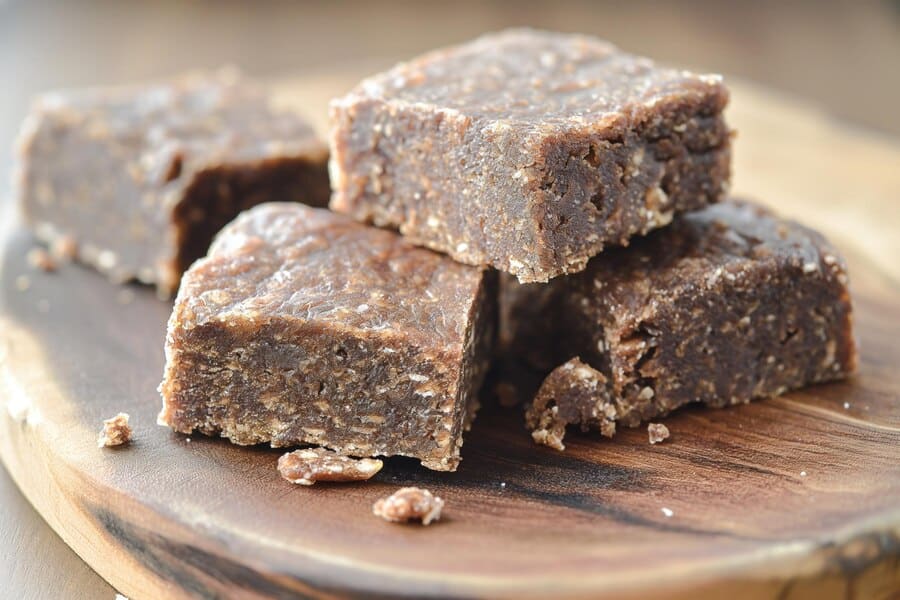 Alexander Mackenzie’s 1793 expedition is a fascinating story. It was a journey that changed how people saw North America. Mackenzie, a Scottish explorer, depended on a special food called pemmican. This food helped him and his group survive tough times on their way to the Pacific Ocean. Keep reading to see how pemmican made a big difference.
Alexander Mackenzie’s 1793 expedition is a fascinating story. It was a journey that changed how people saw North America. Mackenzie, a Scottish explorer, depended on a special food called pemmican. This food helped him and his group survive tough times on their way to the Pacific Ocean. Keep reading to see how pemmican made a big difference.
Key Takeaway
- Alexander Mackenzie used a pemmican to keep his group strong on their long trip.
- Each person carried a lot of pemmican, which was important for energy.
- Mackenzie became the first European to cross North America north of Mexico.(1)
Background on Alexander Mackenzie
Alexander Mackenzie was born in 1764 in Scotland. He grew up in a world filled with adventure and opportunity. As he got older, he became known for his important work in the fur trade. This trade was a big part of life in North America during that time. He first set out on a journey to the Arctic in 1789. But Mackenzie had a bigger dream. He wanted to find a way to the Pacific Ocean.In 1792, he left Fort Chipewyan. This fort was his home base. Mackenzie traveled with a group of diverse people. They included Native guides who knew the land well and French Canadian voyageurs who were skilled in canoeing. This mix of talents made them a strong team. After spending a long and cold winter preparing, they finally set out again on May 9, 1793. The excitement was in the air. Everyone was ready for the adventure ahead. They were determined to face whatever challenges came their way on this historic journey.
The Role of Pemmican
 Pemmican was a key food source for Mackenzie and his crew.(2) This special food is made from dried meat, fat, and sometimes berries. It was packed with energy, which was essential during their long journey. Every member of the group carried a significant amount of pemmican.(3) The voyageurs, who were strong and used to hard work, took about 90 pounds each. On the other hand, the Native hunters carried around 45 pounds. This difference showed how important pemmican was for everyone.Packing pemmican was easy. It fit perfectly in their canoes, which had limited space. With pemmican, they could carry enough food to last a long time. It was not just light but also nutritious. This food played a crucial role in keeping their energy levels high as they traveled through rough and challenging areas. The journey was tough, and without pemmican, it would have been much harder. It allowed them to focus on their goal of reaching the Pacific Ocean while staying strong and healthy.
Pemmican was a key food source for Mackenzie and his crew.(2) This special food is made from dried meat, fat, and sometimes berries. It was packed with energy, which was essential during their long journey. Every member of the group carried a significant amount of pemmican.(3) The voyageurs, who were strong and used to hard work, took about 90 pounds each. On the other hand, the Native hunters carried around 45 pounds. This difference showed how important pemmican was for everyone.Packing pemmican was easy. It fit perfectly in their canoes, which had limited space. With pemmican, they could carry enough food to last a long time. It was not just light but also nutritious. This food played a crucial role in keeping their energy levels high as they traveled through rough and challenging areas. The journey was tough, and without pemmican, it would have been much harder. It allowed them to focus on their goal of reaching the Pacific Ocean while staying strong and healthy.
Expedition Achievements
Mackenzie’s journey reached a significant milestone on July 20, 1793, when he arrived at the Pacific coast in Bella Coola.(4) This achievement was remarkable, especially since it took place 12 years before the famous Lewis and Clark expedition. Mackenzie was the first European to make this crossing in North America north of Mexico. However, the journey was not without its troubles. When Mackenzie and his crew arrived, they faced a challenging situation. The local tribes were not welcoming. This made it difficult for Mackenzie to interact with them or learn more about the land.Due to the tension, Mackenzie had to turn back before he could thoroughly explore the area. His experience highlights how tough it was to travel and discover new places during that time. It also emphasizes the importance of pemmican, which provided the necessary energy to keep him and his men going during difficult times. This high-energy food was vital for their success and helped them endure the challenges they faced throughout their journey.
Team Composition
Mackenzie’s team was made up of various individuals, each bringing their own skills to the expedition. His cousin, Alexander MacKay, joined him on this important journey. Alongside them were two Native guides who had invaluable knowledge of the land. They also had six Canadian voyageurs, known for their strength and canoeing skills. To round out the team, they even brought a dog to help with the journey.The group worked together as a close-knit team. Each member carried a lot of supplies needed for survival. In addition to pemmican, they brought weapons for protection against potential threats. The journey was filled with challenges, but they supported each other throughout. Their teamwork was crucial in overcoming obstacles, such as rough terrains and difficult weather conditions. By working together, they increased their chances of success as they aimed to reach the Pacific Ocean.
Route and Challenges
Mackenzie’s journey began at Fort Fork, a fort built during the cold winter of 1792-93. This fort served as a base for the expedition. From Fort Fork, they traveled along the Peace River, which was one of the first rivers they encountered. As they moved forward, they had to cross the Continental Divide, a major mountain range that separates different watersheds. The terrain was challenging and often unpredictable, making travel difficult.Along the way, they faced many obstacles. Rough rapids made canoeing dangerous, and steep paths tested their strength. The team had to navigate through various rivers, including the Fraser River, which added to their challenges. They also encountered Indigenous groups who were not friendly. This made Mackenzie and his men cautious. They had to respect the land and the people they met. Despite these challenges, they kept pushing forward, driven by their goal of reaching the Pacific Ocean. Their determination was key to their journey.
Historic Achievements
Mackenzie achieved something remarkable in his travels.(5) He became the first European to cross North America north of Mexico. This achievement was a significant moment in history because it opened up new possibilities for trade and exploration. It showed that the continent could be crossed from east to west. Along the way, Mackenzie almost met another famous explorer, George Vancouver, but missed him by just 48 days at Bella Coola. This close encounter is an interesting footnote in the story of exploration.Mackenzie’s journey is remembered for its importance. It helped people learn more about the geography and cultures of North America. His experience provided valuable information for future explorers and traders. Mackenzie’s trip highlighted the hard work and bravery needed to understand the land. As he navigated through difficult conditions and built relationships with Native groups, he paved the way for others who would follow in his footsteps.
Legacy
Mackenzie’s expedition is celebrated today for many reasons. His journey changed how people viewed exploration in North America. Before Mackenzie, few had traveled so far across the continent. His successful crossing showed that it was possible to navigate great distances. This opened up new ideas about trade routes and connections between different parts of the country.His work in the fur trade was important too. It helped establish relationships with Native groups and showed how trade could benefit both sides. Mackenzie’s travels provided valuable information about the land and its resources. People still talk about his experiences and the lessons learned from them.One of the key points of Mackenzie’s journey was the importance of pemmican. This high-energy food was crucial for survival in harsh conditions. It allowed him and his men to stay strong during their long travels. Mackenzie’s use of pemmican highlighted how careful planning and smart choices can lead to success. His legacy continues to inspire those who study exploration and the history of North America.
FAQs
How did Alexander Mackenzie and his fur trade companions survive their challenging expedition across the wilderness?
Mackenzie’s expedition relied heavily on traditional survival techniques. They used bark canoe transportation, consumed dried meat and dried fish, and navigated challenging terrains. The group, consisting of three men and young men, traveled through regions like the river St and slave lake, facing harsh conditions including hot sun and hard frost while maintaining a great rate of progress.
What were the typical challenges faced by fur traders like Peter Pond during long expeditions?
Fur traders like Peter Pond encountered numerous obstacles. They traveled through vast wilderness, often covering ten miles per day in bark canoe or on foot. Their journey involved crossing a large body of water, navigating rocky hill terrain, and surviving on limited resources. They had to be prepared for unexpected challenges, from west road obstacles to potential encounters with war party groups.
How did indigenous survival techniques influence European explorers’ expedition strategies?
European explorers learned crucial survival skills from indigenous communities. They adopted techniques like preparing dried meat, using birch bark for shelter, and understanding local food sources like wild rice. These skills helped them survive in challenging environments, from the east side to the west side of unexplored territories, covering miles long distances with great care.
What role did food preservation play in wilderness exploration during the late 18th century?
Food preservation was critical for survival. Explorers used methods like creating dried meat and dried fish, which could last for years. They would slow fire techniques to prepare provisions, often using melted fat for additional nutrition. These methods allowed them to carry food through ten days of travel or more, ensuring survival in areas with limited fresh meat availability.
How did early explorers navigate and map unknown territories during their expeditions?
Explorers like Mackenzie used various navigation techniques. They measured distances in feet long and feet wide, creating rough maps of territories. They would note landmarks like solid rock formations, large bodies of water, and geographic features. Their expeditions often involved traveling miles east or west, documenting new lands with limited technological resources.
What were the typical transportation methods used by fur traders in the late 18th century?
Fur traders primarily used bark canoe for transportation. These vessels were typically three feet long and could navigate various water bodies. They would travel through regions like Hudson bay, Red river, and other waterways. Their journeys could cover miles long distances, often taking short time to traverse challenging terrains.
How did climate and geographical challenges impact early exploration expeditions?
Expeditions faced extreme conditions like hot sun, hard frost, and unpredictable weather. Travelers had to be prepared for sudden changes, from east india style tropical heat to north pole. They would carefully plan routes, considering factors like feet deep water crossings and potential easy prey encounters during their journeys.
What was a typical day like for a young fur trader during these expeditions?
A young fur trader’s day was demanding. They would wake early, navigate through territories like the sea coast or north west regions, cover ten miles, and prepare camp. Tasks included managing the bark canoe, preparing dried meat, watching for potential war party threats, and surviving on limited resources. Their journey might take them through areas like red earth landscapes or near sea otter habitats.
Conclusion
Mackenzie’s expedition was a significant achievement that highlighted the importance of pemmican. This high-energy food helped him and his men endure tough conditions on their journey to the Pacific Ocean. Mackenzie’s travels not only opened new pathways across North America but also established valuable relationships with Native groups. His legacy continues to influence the way people view exploration and survival in challenging environments, marking an important chapter in the history of the continent.
References
- https://www.encyclopedia.com/science/encyclopedias-almanacs-transcripts-and-maps/alexander-mackenzie-becomes-first-european-cross-continent-north-america-its-widest-part
- https://www.biographi.ca/en/bio/mackenzie_alexander_5E.html
- https://www.cwjefferys.ca/mackenzie-at-the-pacific-1793
- https://www.thecanadianencyclopedia.ca/en/article/sir-alexander-mackenzie-explorer
- https://theinvisiblementor.com/mentor-yourself-sir-alexander-mackenzie-scottish-explorer-fur-trader-and-businessman/
Was this helpful?

I’m Mary R. Q. , a seasoned professional chef dedicated to elevating home cooking experiences. Through my expertise in the culinary arts, I provide practical cooking tips and insightful reviews of kitchen utensils on my blog, milkwoodrestaurant.com. As a passionate advocate for transforming everyday meals into extraordinary culinary adventures, I aim to empower home cooks with the knowledge and tools they need to create delicious and memorable dishes. I’m also an author of the book “1,001 Kitchen Tips & Tricks: Helpful Hints for Cooking, Baking, and Cleaning (1,001 Tips & Tricks)” which is sold on Amazon. Join me on a flavorful journey as we explore the art of cooking and the essential tools that make it a joy.







